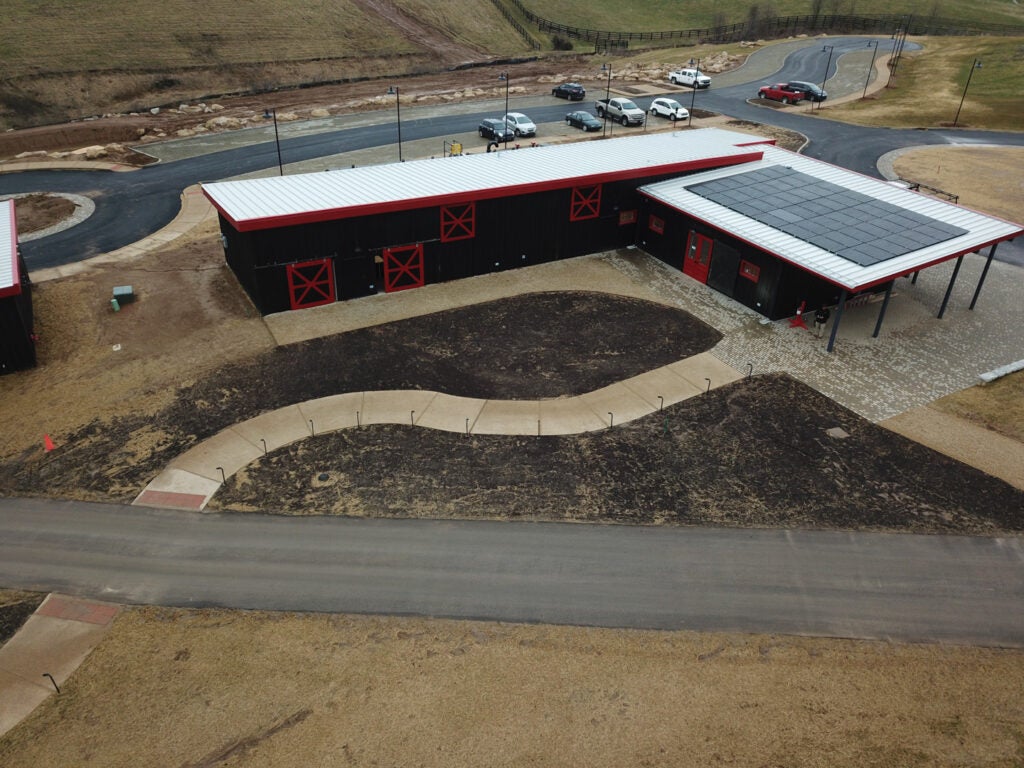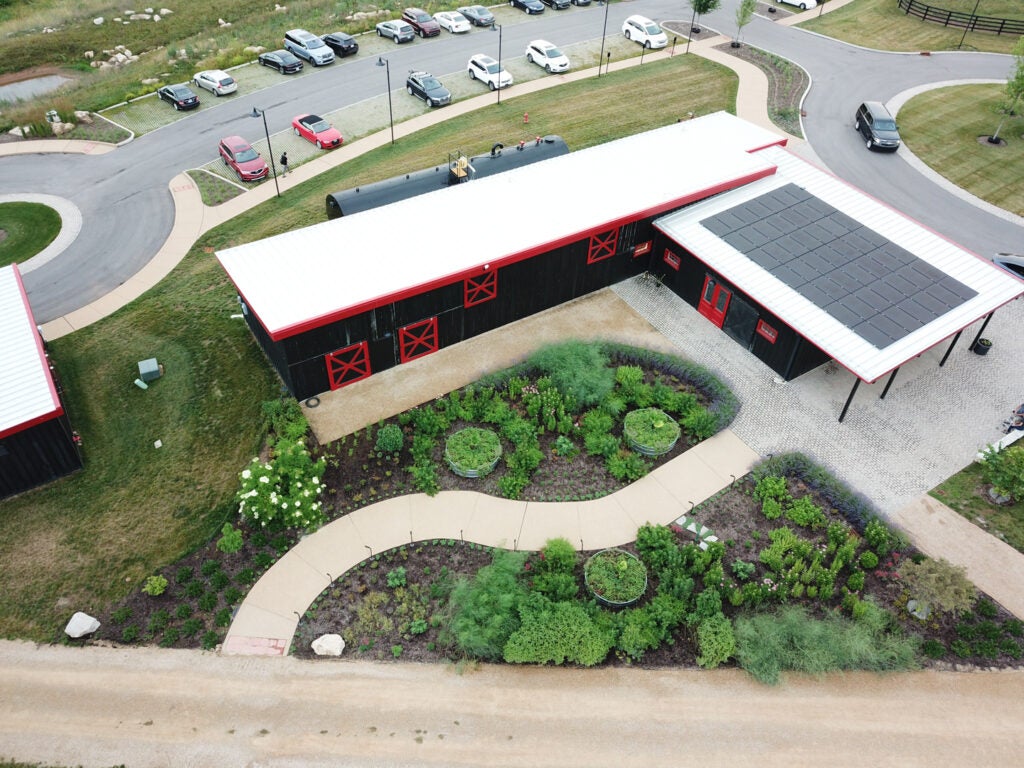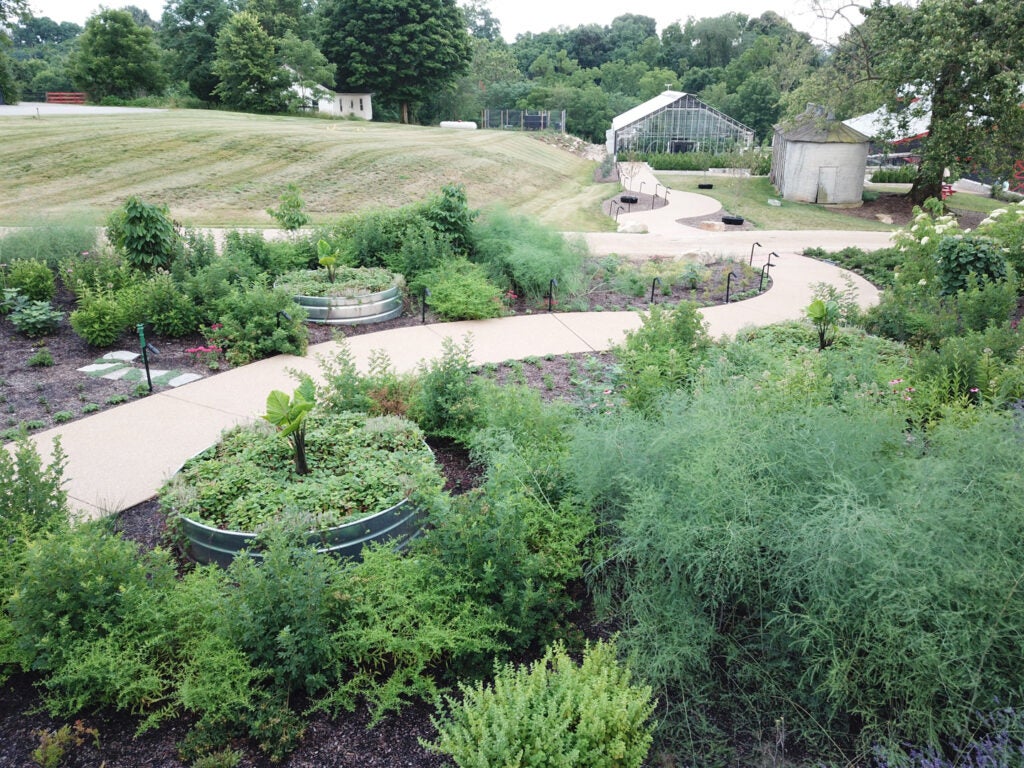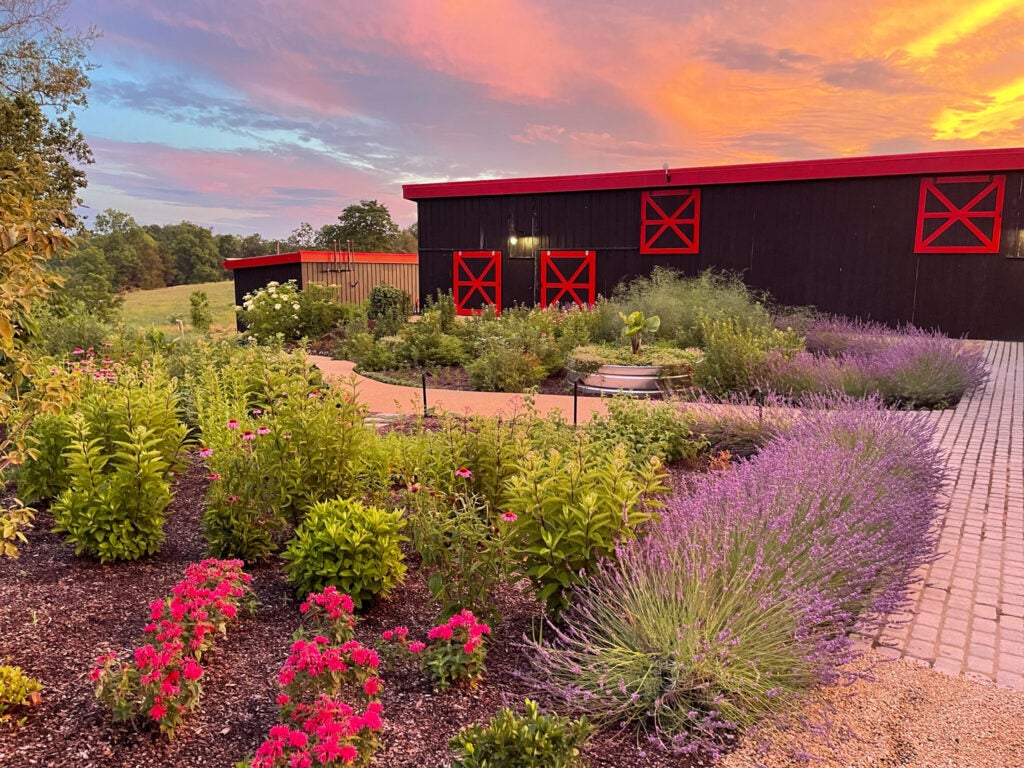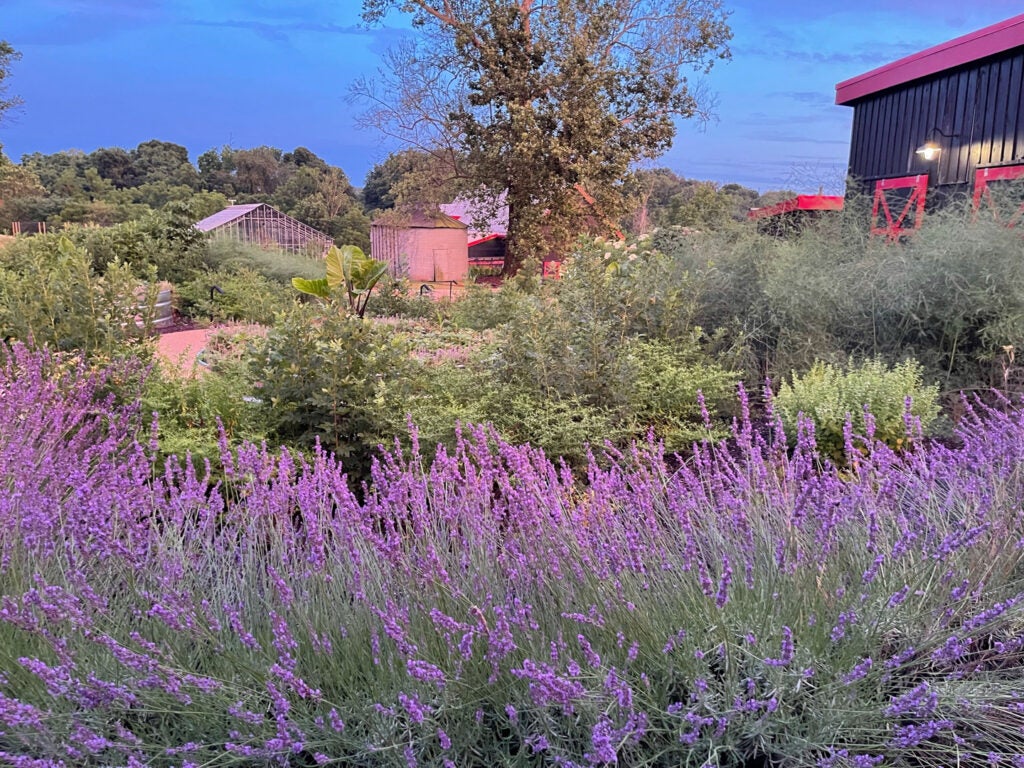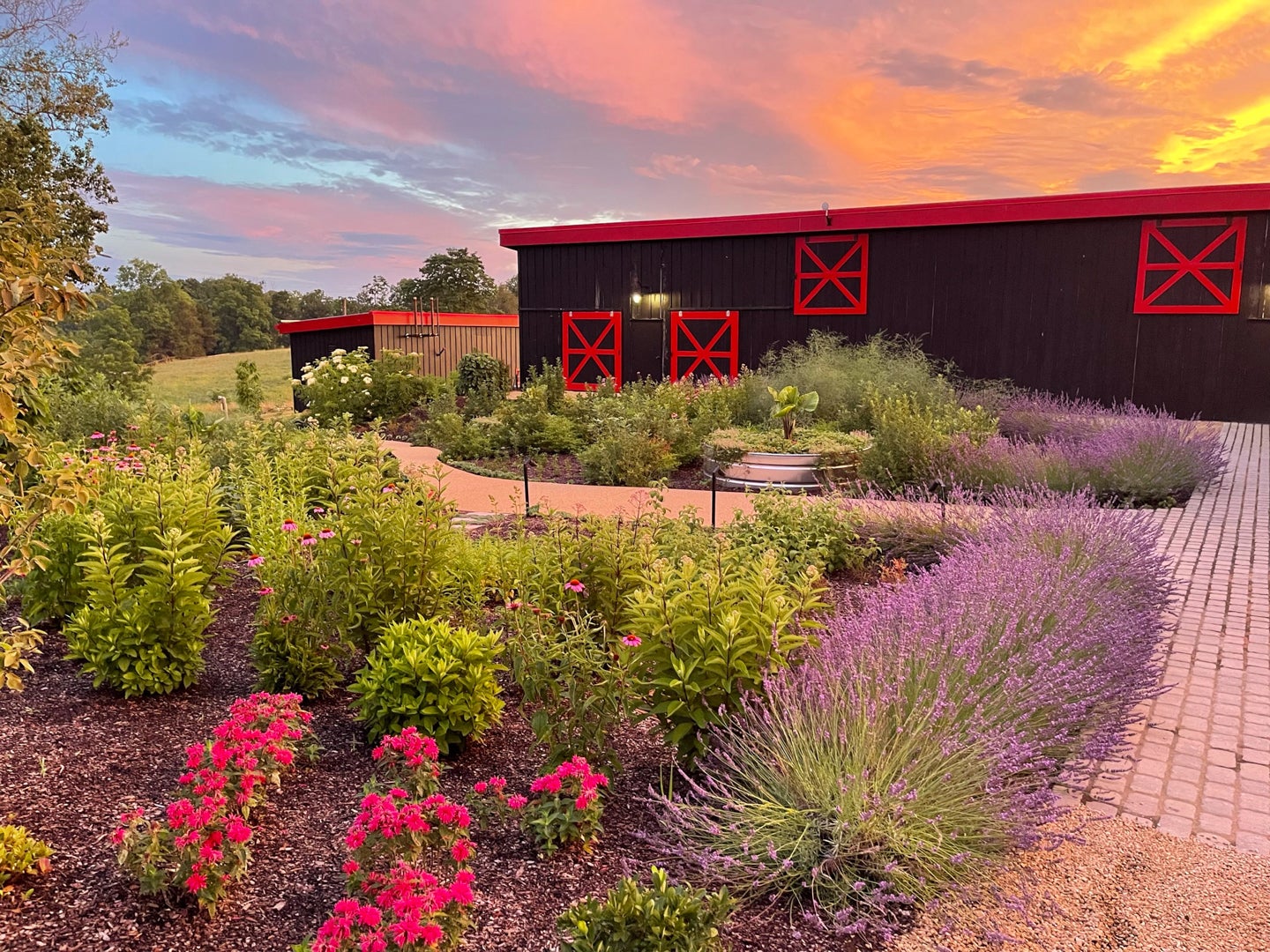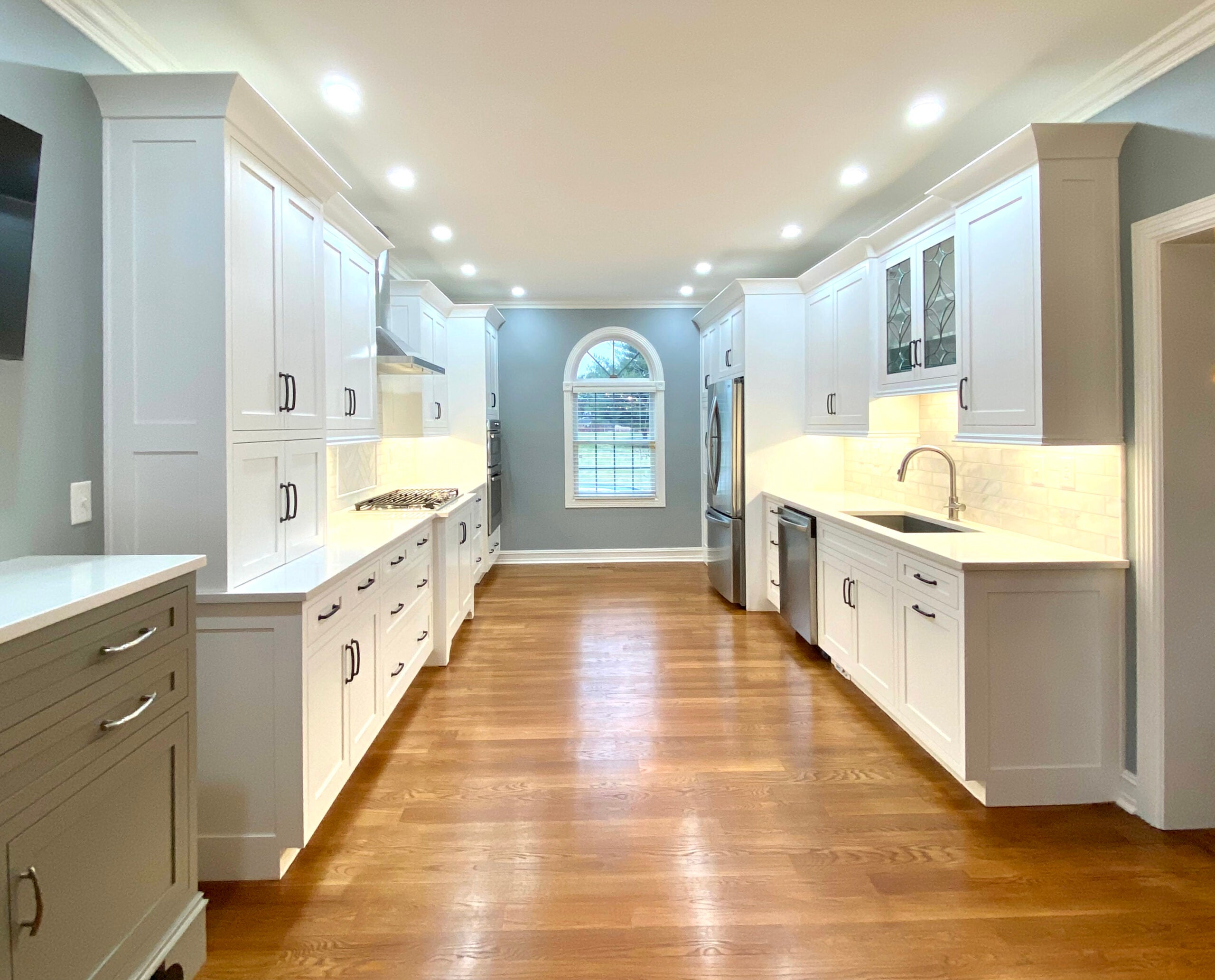and Becky Gatewood
One of the most rewarding parts of working in landscaping is transforming something that is bare into something that appears to completely belong. From design to installation and the cycle of seasons to even just a brief period of maturity, once a landscape takes hold the end result often looks and feels like magic.
When we were approached to design a landscape for a newly proposed restaurant at Hermitage Farm in Goshen, we learned this was no ordinary location. Hermitage Farm has been an equine institution since the early 1900s. In addition to producing thoroughbreds who have won the Oaks and Breeder’s Cup, Hermitage also is known for foaling Dark Star, who went on to cause one of the biggest Derby upsets in history. Dark Star, an underdog with 25 to 1 odds, won the 1953 Derby beating the undefeated favorite by a nose.
In addition to thoroughbreds, Hermitage Farm also is focusing on providing the public a farm-to-table dining experience at their restaurant Barn 8, which opened in 2020. When asked to provide a landscaping plan, we were presented with several considerations to keep in mind. Not only were we designing for visual beauty, but we were also asked to address some specific functional needs.
The site itself was bare, with agricultural buildings and only a sidewalk dividing empty planting beds. What resulted was a plan that included utilizing edible plants that also complemented the aesthetics of the visitor’s center, store and the newly renovated Barn 8. The edible plants could be used by the restaurant and sold in their store, but the plants also had to be visually attractive for visitors who wandered the grounds or awaited their dining reservations.
The landscape was installed in 2020 and it continues to evolve with each season and each passing year. Various textures, forms and colors of plants were utilized to increase the aesthetic appeal of the space throughout all seasons. The architecture, including galvanized storage silos and sleek freshly updated barns, provides the perfect contrast for lush planting beds.
The edible garden was created utilizing primarily a mixture of perennial plants, including material native to our area (blueberry, chokeberry, serviceberry, redbud, pawpaw, hazelnut, wintergreen, aster, bee balm, coneflower, black eyed susan, phlox, virginia rose, elderberry, joe pye weed, wild ginger, violet, hyssop and more), lavender hedges, edible roots of Jerusalem artichoke, hardy fig, asparagus and a variety of herbs for use in the restaurant/gift shop.
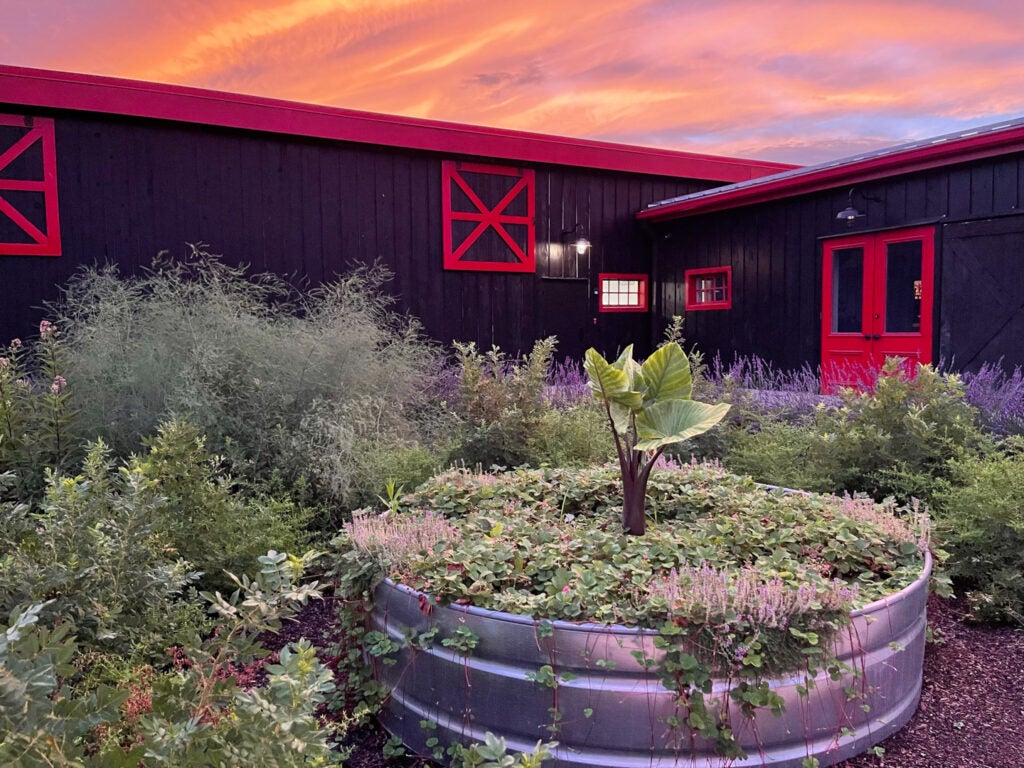
Many of the edibles, such as wild ginger, bee balm and wintergreen, serve as groundcover under fig and hazelnut trees. The lavender hedge, feathery asparagus, bronze fennel, along with the bright blooms of “Lipstick” Strawberry make a bold statement against the black barn with red accents. Galvanized troughs serve as focal points and structure in the garden to complement the farm setting and tie into the metal material of existing buildings.
Mulch paths circle the troughs for maintenance and harvest access, as well as for visitors to get closer to the plants. What was once bare now appears to have been in existence for years. The landscape now seems to belong amongst the barns and modern updates of this historic site.
Today, the site has expanded immensely and Barn 8 continues to offer a farm-to-table menu with items grown on site, as well as other locally sourced food items. The equine tradition at Hermitage continues as well. One of the latest ventures for the public even allows visitors to taste bourbon alongside retired racehorses. Blooms, bourbon, horses and food — what more does a true Kentuckian need?
Thank you FRANK readers for following and reading our articles since 2017, when FRANK began. We have enjoyed writing for you over the years, sharing our projects, helping educate on invasive and beneficial species, and so much more! This will be our last article, at least for now, as we will be focusing our energy on our website blog. We hope you will follow along at The Inside on Outdoor Living at https://kentuckylandscapedesign.com/blog/.
Sources for this article include, Bailey, J. (11 February 2020), “Hermitage Farms sets opening date for new food, bourbon tasting experience;” WLKY News, https://www.wlky.com/article/hermitage-farms-sets-opening-date-for-new-food-bourbon-tasting-experience/30870816#; Durham, A. (1 February 2022), “You can sip bourbon among retired race horses at new Hermitage Farm experience;” WLKY News, https://www.wlky.com/article/you-can-sip-bourbon-among-retired-race-horses-at-new-hermitage-farm-experience/38948811; Lee, P. (17 July 2020), “The 1953 Kentucky Derby: Native Dancer’s Only Blemish;” and Past the Wire, https://pastthewire.com/the-1953-kentucky-derby-native-dancers-only-blemish/.
